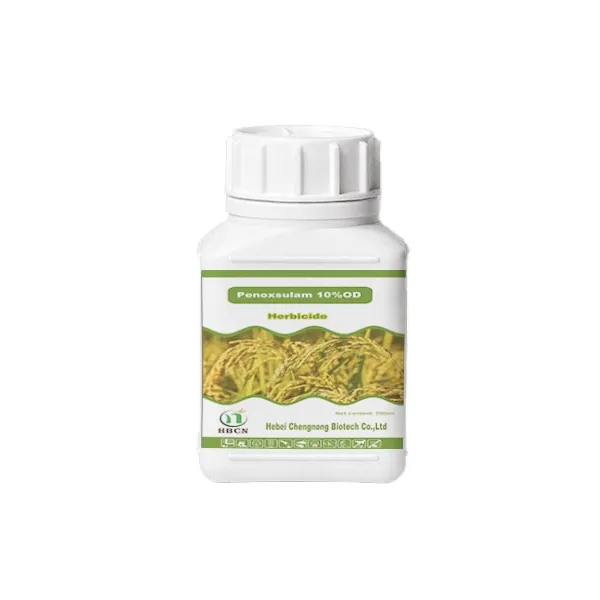
Dec . 14, 2024 00:58 Back to list
Wholesale Difenoconazole and Azoxystrobin for Effective Crop Protection Solutions
The Significance of Difenoconazole and Azoxystrobin in Agriculture
In the ever-evolving world of agriculture, managing plant health is paramount for ensuring high-quality yields and sustainable farming practices. Among the various agrochemicals available, fungicides play a crucial role in preventing and managing fungal diseases that can devastate crops. Two such prominent fungicides are Difenoconazole and Azoxystrobin, both of which are widely used by farmers around the globe.
Overview of Difenoconazole
Difenoconazole, a member of the triazole class of fungicides, is known for its systemic action and broad-spectrum effectiveness against a variety of fungal pathogens. It works by inhibiting the synthesis of ergosterol, an essential component of fungal cell membranes. This mode of action prevents the growth and reproduction of fungi, making it effective against diseases such as rust, blight, and leaf spot.
What makes Difenoconazole particularly appealing to farmers is its versatility. It can be used on a wide range of crops, including cereals, fruits, vegetables, and ornamental plants. Additionally, it offers long-lasting protection, allowing farmers to reduce the frequency of applications. This characteristic not only lowers labor costs but also minimizes the potential for chemical residue on the crops.
Role of Azoxystrobin
Similarly, Azoxystrobin belongs to the strobilurin class of fungicides and acts by inhibiting mitochondrial respiration in fungi, which disrupts their energy production. This makes Azoxystrobin effective against a multitude of fungal diseases, including those affecting crops like potatoes, soybeans, and grapes. It is one of the most popular fungicides in use today due to its excellent efficacy and resistance management properties.
Azoxystrobin also features strong preventative and curative components, providing protection to crops before and after infection. Its strong environmental profile, marked by low toxicity to mammals and beneficial insects, adds to its appeal among environmentally conscious farmers. Moreover, its ability to remain effective under various conditions positions it as a key player in modern agricultural practices.
wholesale difenoconazole azoxystrobin

Benefits of Using Difenoconazole and Azoxystrobin Together
When used in combination, Difenoconazole and Azoxystrobin can create a synergistic effect that enhances their overall efficacy. This combination not only broadens the spectrum of diseases that can be controlled but also mitigates the risk of developing fungal resistance. Fungal pathogens can quickly adapt to single-site inhibitors, which is a common challenge in crop protection. By employing a multi-site mode of action strategy, farmers can help ensure that their crops remain healthy and productive.
Furthermore, the use of these compounds can lead to better crop quality and increased yields. Healthy plants are less susceptible to pests and environmental stress, which ultimately results in a more sustainable farming practice. The economic benefits of enhanced yields and reduced crop loss cannot be overstated, especially in today’s competitive agricultural market.
Considerations for Use
While Difenoconazole and Azoxystrobin are effective tools in the fight against fungal diseases, proper management practices must be adhered to. Farmers should follow label recommendations regarding application rates and timings. Over-reliance on chemical fungicides can lead to resistance development in fungal populations, necessitating the need for integrated pest management strategies that include crop rotation, diverse planting, and the use of resistant crop varieties.
Moreover, environmental considerations should be taken into account. While both fungicides have favorable profiles, mindful application is crucial to avoid runoff and protect non-target organisms in surrounding ecosystems.
Conclusion
Difenoconazole and Azoxystrobin are vital components of an integrated approach to crop protection. Their effectiveness against a variety of fungal diseases, combined with their low toxicity and versatility, makes them essential tools for modern agriculture. Through responsible use and management, these fungicides can contribute significantly to enhanced agricultural productivity, ensuring food security and sustainability for the future. As the agricultural industry continues to face challenges such as climate change and increasing pest resistance, the role of advanced fungicides like Difenoconazole and Azoxystrobin will become increasingly important.
-
Kasugamycin Fungicide: Efficient Bacterial & Fungal Control
NewsAug.02,2025
-
Emamectin Benzoate: AI-Optimized Pest Control Solution
NewsAug.01,2025
-
Best Abamectin 95% | Top Pesticide for Crop Protection
NewsJul.31,2025
-
Insecticide Spirotetramat 11% + Thiacloprid 11% SC at Good Price
NewsJul.30,2025
-
Best Abamectin SDS - Premium Quality & Reliable Safety Data
NewsJul.29,2025
-
Agrochemicals Pesticides Solutions for Sustainable Farming
NewsJul.29,2025
